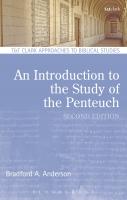The Roman Baths of Lycia: An Architectural Study
This volume examines the arrival and development of a distinctively Roman building type in an area of southwest Turkey w
143 30 50MB
English Pages 284 [280] Year 1995
00010001
00010002
00010003
00010004
00010005
00010006
00010007
00010008
00010009
00010010
00010011
00010012
00010013
00010014
00010015
00010016
00010017
00010018
00010019
00010020
00010021
00010022
00010023
00010024
00010025
00010026
00010027
00010028
00010029
00010030
00010031
00010032
00010033
00010034
00010035
00010036
00010037
00010038
00010039
00010040
00010041
00010042
00010043
00010044
00010045
00010046
00010047
00010048
00010049
00010050
00010051
00010052
00010053
00010054
00010055
00010056
00010057
00010058
00010059
00010060
00010061
00010062
00010063
00010064
00010065
00010066
00010067
00010068
00010069
00010070
00010071
00010072
00010073
00010074
00010075
00010076
00010077
00010078
00010079
00010080
00010081
00010082
00010083
00010084
00010085
00010086
00010087
00010088
00010089
00010090
00010091
00010092
00010093
00010094
00010095
00010096
00010097
00010098
00010099
00010100
00010101
00010102
00010103
00010104
00010105
00010106
00010107
00010108
00010109
00010110
00010111
00010112
00010113
00010114
00010115
00010116
00010117
00010118
00010119
00010120
00010121
00010122
00010123
00010124
00010125
00010126
00010127
00010128
00010129
00010130
00010131
00010132
00010133
00010134
00010135
00010136
00010137
00010138
00010139
00010140
00010141
00010142
00010143
00010144
00010145
00010146
00010147
00010148
00010149
00010150
00010151
00010152
00010153
00010154
00010155
00010156
00010157
00010158
00010159
00010160
00010161
00010162
00010163
00010164
00010165
00010166
00010167
00010168
00010169
00010170
00010171
00010172
00010173
00010174
00010175
00010176
00010177
00010178
00010179
00010180
00010181
00010182
00010183
00010184
00010185
00010186
00010187
00010188
00010189
00010190
00010191
00010192
00010193
00010194
00010195
00010196
00010197
00010198
00010199
00010200
00010201
00010202
00010203
00010204
00010205
00010206
00010207
00010208
00010209
00010210
00010211
00010212
00010213
00010214
00010215
00010216
00010217
00010218
00010219
00010220
00010221
00010222
00010223
00010224
00010225
00010226
00010227
00010228
00010229
00010230
00010231
00010232
00010233
00010234
00010235
00010236
00010237
00010238
00010239
00010240
00010241
00010242
00010243
00010244
00010245
00010246
00010247
00010248
00010249
00010250
00010251
00010252
00010253
00010254
00010255
00010256
00010257
00010258
00010259
00010260
00010261
00010262
00010263
00010264
00010265
00010266
00010267
00010268
00010269
00010270
00010271
00010272
00010273
00010274
00010275
00010276
00010277
00010278
00010279
00010280
Recommend Papers

- Author / Uploaded
- Andrew Farrington
File loading please wait...
Citation preview
British Institute of Archaeology at Ankara Monograph No. 20
THE ROMAN BATHS OF L YCIA AN ARCHITECTURAL STUDY
LIKYA'DAKI ROMA HAMAMLARI MIMARI ARA~TIRMALARI
Andrew Farrington
Published by THE BRITISH INSTITUTE OF ARCHAEOLOGY AT ANKARA 1995
British Institute of Archaeology at Ankara, c/o British Academy, 20-21 Cornwall Terrace London NW14QP
This book is available from Oxbow Books, Park End Place, Oxford OXJJHN
ISBN 1 898249 04 0 ISSN 0969-9007 © British Institute of Archaeology at Ankara, 1995
All rights reserved. No parts of this publication may reproduced, stored in a retrieval system, or transmitted, in any form or by any means, electronic, mechanical, photocopying, recording or otherwise, without prior permission of the British Institute of Archaeology at Ankara.
The cover shows a view of Baths B (Yedi Kapz) at Tlos, Lycia (A. Farrington)
Printed by Short Run Press Ltd, Exeter
Contents PAGE Preface Acknowledgements
v vi
~~M~
~
List of Tables List of Illustrations Abbreviations English Summary Ttirkce Ozet (Turkish Summary) Maps
vn IX
xiii xix xxi xxiv
INTRODUCTION
1
CHAPTER 1 The Layout of Lycian Baths
3
General Description Lycian Bathing Habits Conclusions
CHAPTER 2 Imperial Baths in the Remainder of South-West Asia Minor A. Rectangular Bath Blocks Symmetrical About Short Axes with Double
Circulatory Patterns A(i). Bath Blocks With Annular Double Circulatory Patterns A(i)(a). Bath Blocks With a Long Narrow Frigidarium A(i)(b). Other Double Annular Layouts (excluding the Baths at Caunus) A(i)(c). The Baths at Caunus A(ii). Bath Blocks With Retractive Double Circulatory Plans B. Asymmetrical Bath Buildings on a Block Arrangement C. Bath Buildings on a Row Arrangement C (i). Bath Buildings on a Simple Row Arrangement C (ii).Bath Buildings on a Row Arrangement with Transverse Elements D. Bath Buildings with a Central Rectangular Covered Gallery Relationship of Lycian Bath Design to Bath Design in the Rest of Imperial Asia Minor
CHAPTER 3 The Origin of Lycian Baths Hellenistic Baths and Bathing Imperial Baths in the Aegean Islands and Mainland Greece Republican and Imperial Baths on a Row Arrangement in Rome and the Rest of Italy Conclusions on the Origin and Plan ofLycian baths
3 7 15
20 20 20 20 25 26 27 29 30 31 32 34 37
41 41 43 44 48
IV
CHAPTER 4 Structural Techniques and Chronology Masonry Techniques Employed in Lycian Baths A. Polygonal Masonry A(i). Chronology of Closely Jointed Polygonal A(ii). Chronology of Loosely Fitted Mortared Polygonal Masonry A(iii). Chronology of Mortared Rubble B. Coursed Masonry B(i). Chronology of Mortarless Coursed Masonry B(ii). Chronology of Coursed Masonry on Structurally Important Core B(iii). Chronology of Single Walls of Coursed Masonry on Mortar Core C. Brickwork and Other Vaulting Techniques Epigraphically Attested, but Otherwise Unknown Baths Dating Spread of Baths Structural Techniques in Lycia Building Techniques in Areas Neighbouring upon Lycia A. Caria and Ionia B. Southern Phrygia C. Pamphylia, Pisidia and Cibyra D. Rough Cilicia Building Techniques in Lycia and in the Rest of South-West Asia Minor
CHAPTER 5 Heating, Water Supply and Decoration Heating Techniques in Lycian Baths Water Supply Marble Revetment, Painted Plaster, Statuary and Mosaic
CHAPTER 6 Baths and Bathing in the Social and Cultural Life of Lycia The Introduction, Popularity and Decline of Bathing in Lycia The Social and Cultural Background: Hellenization and Romanization The Place of Baths and Bathing in Imperial Lycia: The Relationship Between Baths and ru!Jvama Conclusions
CATALOGUE Part One: Baths and ru!Jvama in Imperial Lycia Part Two: Selective Catalogue of Baths and ru!Jvama in Areas Neighbouring Lycia
INDEX
52
52 52 53 66 67 70 72 72 72 76 78 79 80 86 87 89 90 92 92
101 101 104 111
117 117 121 133 136
149 149 164
175
Preface I would first of all like to thank my doctoral supervisor, Dr J J Coulton. .He suggested Imperial Lycian baths as a topic of study for the doctorate upon which this work is based, and kept me generously supplied with sometimes crucial material from his own fieldwork. I have however relied on the help of many others; the late Mr A S Hall, who invited me to participate in the survey of Oenoanda conducted by the British Institute of Archaeology at Ankara, and Dr Stephen Mitchell, Dr David French and Dr Anne Murray who helped me find my way around south-~est Turkey. Among many friends in Oxford I must single out Dr and Mrs E Stento~ who helped me with my architect~ral drawings, and Dr J Mariathasen, who helped me with the photography. ~r Barbara Levick in Oxford, and Dr Kanm Arafat, Dr Judith Binder, Dr Catherine Morgan, and Dr Caroline Williams in Athens very kindly read parts . or all of the manuscript, and I have profited greatly from their comments. I must also thank Dr J DeLaine, for supplying me with a copy of her important paper on the links between Hellenistic and Roman baths, Dr Hazel Dodge, for a stimulating correspondence on bricks in Asia Minor, Professor Fikret Yegtil, for supplying me with a copy of his Harvard Ph.D thesis, which I have used a great deal, and to Dr B Kupke, for information and views on certain buildings at Cyaneae. None of these, of course, is to be held respon~ib!e for any of the faults that doubtless remam m my work. My thanks are also due to the British Institute of Archaeology at Ankara, the Craven Committee of the University of Oxford, the U.K. Department of Education and Science and the Publications Committee of the Faculties of the Australian National University for their extremely liberal financial support. Department of Classics, . Victoria University of Wellington, New Zealand
Equally important are my debts. to the Turkish government and people. Fust and foremost, I thank the Ministry of Tourism and Culture for so readily granting me a permit to conduct surveys of certain Lycian bath buildings. In particular, I thank Mr Ramazan Peker of Aydm Museum, who was assigned me ~s my gov~r_n.ment representative, for his help and flexibility far beyond the call of duty. I thank, too, the Directors of Museums at Antalya, Aydm, Fethiye, Parnmukale and Side for th~ir advice and practical help. My work profited from conversations with Professor Dr. H Abbasoglu, Professor Dr. C Bayburtluoglu and Professor Dr. E Akurgal. I also thank the German Archaeological Institute in Istanbul, the use of the facilities of which were readily granted me by the late Pr?fess~:>r W Mi.iller-Wiener. Much of my time m Turkey was taken up in travelling, and I must record my warm thanks to the Turkish people for their unfailing kindness and help. I would also like to thank the Canadian Institute of Archaeology in Athens, which provided me with convenient and con~enial surroundings in which to finish the thesis t~at forms the basis of this book. The translatiOn of the summary into Turkish is by Ms Z Lanera, whom I also thank. I must also thank Mr Stephen Marshall, o! t~e Computing Servic~s Centre of th~ Y_Ictona University of Wellington, for furmshmg me with a Turkish typeface. The bulk of the work for this study was completed by 1989, but ~nf?resee~ circumstances have delayed publicatiOn until the present. I have therefore _been able to take into account only the more Important wor~s published since 1989 that relate to Lycia, Asia Minor and to bathing in general.
June 1994
Acknowledgements I gratefully acknowledge permission from the following to reproduce material as text figures and photographs. American Academy at Rome, fig 52. Professor Dr C Bayburtluoglu, figs 136, 138, 149. J Bean, fig 80. Corinth Excavations, American School of Classical Studies at Athens, fig 93. J J Coulton, figs 115, 116, 126, 133, 152, 195. Deutsches
Archaologisches Institut, Abteilung Istanbul, fig 168. Walter de Gruyter & Co., figs 47, 59. 'L'Erma' di Bretschneider, fig 190. MIT Press, figs 39, 41, 46 (from F Yegiil Baths and Bathing in Classical Antiquity (MIT Press, New York and Cambridge, Mass., 1992). Penguin Books, figs 42, 49, 51, 53, 54. Prestel Verlag, Munich, figs 88, 95, 97. R A Tomlinson, fig 92. Tiirk Tarih Kurumu, Ankara, figs 57, 66, 68.
Te§ekkiirler Bu ~ali§manm TUrkiye hUkUmetinin bUyUk destek ve i§birligi olmadan ger~ekle§tirilmesi imkansiZdL Her§eyden once, Likya hamamlanmn yerinde in~elenmesi i~in gerekli izni seve seve derhal veren Turizm ve Ktilttir bakanhg1mn yetkililerinden saym Dr. Nurretin Yardimci'ya te§ekkur etmeyi vazifem say1yorum. Aynca TUrk hUkUmetinin temsilcisi s1fat1 ile gorevinin smulanm a§arak bana saglad1g1 bUyUk yard1m ve destekten otUrU Aydm mUzesi gorevlilerinden saym Ramazan Peker'e de te§ekkUr ederim. Tavsiyeleri ve praktik yard1mlar1 ile bana yard1mc1 olan Antalya, Aydm, Fethiye, Pamukkale ve Side mUzelerinin mUdUrlerine te§ekkUr etmem
gerekiyor. ,
"0
..c: ....
VJ .::::! -;SO. tl:l VJ ill :::l c 0 c tl:l ·0 .--< --< u u
-
......
VJ
~
....
~ ,
~
tl:l
VJ
z
0
c









